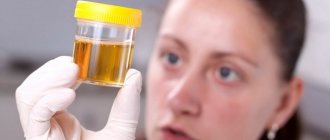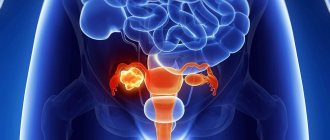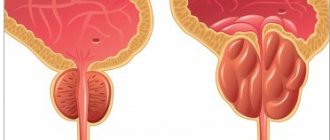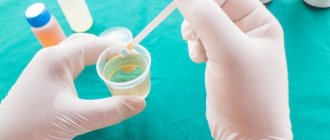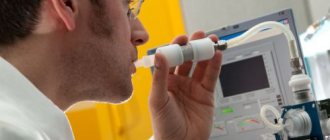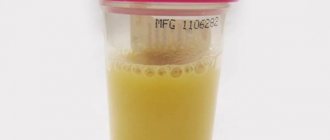In children, checking the condition of the urinary system begins with a routine examination - a general (clinical) urine test. No matter how simple and “unnecessary” it may seem at first glance, a urine test is very important for checking your health. Children are usually embarrassed to tell their parents about problems with urination. Sometimes there really are no complaints, but at the same time, changes characteristic of various diseases (for example, diabetes mellitus) can be seen in the TAM. Therefore, there are certain regulations for examining children. Thus, a pediatrician is required to prescribe a general urine test for a child aged 2 and 12 months, 3,6,7,10,15,16 and 17 years (Order of the Ministry of Health of the Russian Federation dated August 10, 2017 N 514N “On the procedure for carrying out preventive medical examinations of minors"). In addition to preventive examinations, OAM is usually prescribed for any complaints in a child. This is required to obtain a more complete picture of the state of general health.
When is it necessary to take a general urine test for children?
Children need a urine test on the recommendation of a pediatrician. You can test yourself before visiting a doctor in the following cases:
- if the child was sick and the first urine test revealed pathological changes
- if the child has complaints of pain and pain when urinating, pain in the lumbar region
- if the child’s urine color and smell has changed, the volume of urine has increased or decreased during the day
- if the child’s body temperature has risen, chills have appeared
- if planned hospitalization in a hospital is required
- if you independently conduct annual preventive examinations for your children
- if the child had a disease that could cause complications on the kidneys (viral infections, tonsillitis, scarlet fever, etc.)
What is specific gravity and what is it formed from?
SG in urine analysis is an indicator that is always present. Unlike proteins, leukocytes and other components, specific gravity does not disappear under any circumstances. It can only change up or down under the influence of endogenous factors. SG is made up of substances that dissolve in urine during metabolism.
During diagnosis, the following parameters of urine density can be determined:
- isosthenuria - constant maintenance of relative density at the level of 1.010-1.012 g/l, which corresponds to the specific gravity of primary urine. This condition is observed in the absence of the concentrating ability of the kidneys;
- hyposthenuria - a reduced SG value of urine less than 1.007 g/l, caused by the influence of external or internal factors, for example, acute renal failure or increased fluid intake;
- hypersthenuria - an increase in the specific gravity of urine above 1.025 g/l, accompanied by an increase in the concentration of solid substances in it, characteristic of diabetes mellitus.
Normal density indicators
Urine normally consists of more than 90% water. However, the density of these liquids is different. Due to the fact that urine contains cells, chemical elements, salts, and other substances, the specific gravity of urine is higher than water. If one is taken as the density of water, then for the urine of an adult the normal values will be in the range from 1.015 to 1.025 g/l.
In a breastfed child, the SG norm in urine is 1.001-1.016 g/l. Children under 12 years of age may produce urine with a low specific gravity. By adolescence, the performance of their body is compared with that of adults.
When interpreting diagnostic results, it is necessary to take into account the reference ranges of a particular laboratory. The average statistical indicators are established in the table.
| Patient age | Minimum value, g/l | Maximum value, g/l |
| 1 day | 1,008 | 1,018 |
| 2 days – 6 months | 1,002 | 1,004 |
| 6-12 months | 1,006 | 1,0016 |
| 1-5 years | 1,001 | 1,002 |
| 5-8 years | 1,008 | 1,022 |
| 8-12 years | 1,011 | 1,025 |
| 12 years or more | 1,015 | 1,025 |
The weight of biological fluid changes with each meal and water; its indicators differ from usual in the morning and after intense training. The density depends on the patient’s health condition and the time of year. Even the atmosphere in the room where the person is located can affect the result.
Experiments show that even slight increases in temperature cause an increase in urine density. With an increase in sugar by 1%, there is a simultaneous increase in SG by 0.004.
How to properly collect a urine test for children
Before collecting urine, parents should wash the child thoroughly. If an older child can carry out hygiene procedures on his own, then you need to tell him how to properly perform a thorough toilet of the external genitalia (wash in the shower using baby soap (girls need to wash from front to back), wipe the skin of the perineum dry with a clean towel).
An average portion of urine is collected during the first morning urination - the child begins to urinate in the potty (toilet) for 1-2 seconds, then a sterile container is placed and at least 30 ml of urine is collected, the last portion of urine is flushed into the potty (toilet). Urine can be collected at any time during the day. When collecting urine, it is advisable not to touch the container to your body.
When collecting urine for examination in infants and small children, special urinals with a hypoallergenic skin adhesive (sold in pharmacies) are used. The urine bag is checked every 15 minutes, and the collected biomaterial is poured into a sterile container for collecting urine. The minimum volume is 10-20 ml.
It is advisable to deliver the container with urine to the medical office within 2 hours after collecting the biomaterial.
You cannot use jars, bags, etc. to collect urine as the result may be erroneous (they may contain residues of proteins, carbohydrates and bacteria).
You should also not wring out baby diapers to extract urine.
What does the SG value indicate?
SG is an abbreviation of the English phrase specific gravity; translated into Russian it means “specific gravity”. This is a physical characteristic of a general (clinical) urine test. Its deviations from normal values indicate possible malfunctions in the functioning of the body.
When deciphering SG, a specialist can judge the following deviations from the norm:
- Hyposthenuria - decreased SG. It is normal for infants under one year of age and adults following a diet with increased fluid intake. Sometimes indicates renal failure.
- Hypersthenuria - increased SG. Often indicates general dehydration of the body, but can also be a symptom of other diseases. A person himself can judge hypersthenuria already at the stage of collecting material. The color of the liquid becomes rich yellow, the smell becomes pungent.
- Isosthenuria (monotonic diuresis) is a sign of a serious violation of the filtering capacity of the renal glomeruli. In a healthy person, urine SG changes throughout the day depending on food intake, physical activity, and the amount of fluid drunk. With monotonous diuresis, this indicator remains constant (usually low). This condition is detected by Zimnitsky's test.
The cause of isosthenuria may be uncontrolled adherence to a salt-free diet, a diet low in protein, incorrect selection of diuretics (including natural ones), or their use for a long time.
Interpretation of a general urine test in children
Deviations from the norm of many indicators may be of physiological origin or indicate various pathological processes in the body. It must be remembered that interpretation of the results of a general urine test should be carried out only by the attending physician, since the results of laboratory tests are not the only criterion for making a diagnosis and prescribing appropriate treatment. They should be considered in conjunction with medical history and the results of other possible examinations, including instrumental diagnostic methods.
At the medical office, you can get personal advice from a Doctor Q service doctor on deciphering the results of a urine test during your appointment or by phone.
Color. The normal color is yellow of varying intensity. It may change when you eat certain foods and take certain medications. Whitish, dark brown or other uncharacteristic color indicates the presence of pathology. Urine should be clear.
The smell of ammonia, rotting apples or rotten meat indicates various diseases (for example, cystitis, diabetes, purulent inflammation).
Urine reaction. Normal pH is 5-7 (slightly acidic reaction). Increased acidity is characteristic of feverish conditions, renal failure, diabetes mellitus and other pathologies. An alkaline reaction is observed in chronic infectious diseases.
Density readings are used to assess kidney function. During the day, the specific gravity of urine fluctuates.
There is normally no protein in the urine (proteinuria). Its appearance is a marker of the presence of various diseases (inflammatory infectious diseases of the urinary tract, kidney pathology and others). Protein is also detected in the urine after severe hypothermia or high physical activity.
There should normally be no glucose in the urine. Its detection in a biomaterial sample may indicate the presence of diseases (diabetes mellitus, pancreatic cancer, pancreatitis, etc.), as well as severe stress and consumption of large amounts of carbohydrates.
Bilirubin is detected in hepatitis, cirrhosis, obstructive jaundice and other pathological conditions associated with liver damage.
Urobilinogen in high concentrations indicates liver damage, hemolytic jaundice, and gastrointestinal diseases. An increased amount of ketone bodies indicates a disorder in protein, carbohydrate or lipid metabolism. Nitrites indicate a urinary tract infection.
Flat epithelium is the superficially located skin cells of the external genitalia. Detection of it in urine has no diagnostic value.
Transitional epithelium is found in the kidneys, ureters, bladder and upper urethra. Single cells can be found in urine sediment in healthy people. They are found in large quantities during intoxication, after instrumental interventions on the urinary tract, with jaundice, kidney stones and chronic cystitis.
The renal epithelium in healthy people is not found in sediment microscopy. Found in patients with nephrosis and nephritis.
Red blood cells are normally present in urine in small quantities. A small number of red blood cells can be observed after sports activities, lower back injuries, hypothermia and overheating. The appearance of a large number of red blood cells in the urine can occur in various pathologies (glomerulonephritis, nephrosis, collagenosis, heart disease, sepsis, influenza, infectious mononucleosis, rubella, tonsillitis, dysentery, etc.).
Leukocytes are present in the urine of healthy people. An increased number of leukocytes in the urine of women can occur when urine is contaminated with vaginal secretions. A high content of leukocytes in the urine occurs with pyelocystitis, pyelonephritis, fever of various origins, and genitourinary tract infections.
Cylinders are cylindrical structures that are primarily composed of protein and/or cells. They are usually found in pathologies of the urinary system (glomerulonephritis, pyelonephritis, renal tuberculosis, diabetic nephropathy, chronic kidney disease, renal amyloidosis, fever, scarlet fever, myeloma, osteomyelitis, systemic lupus erythematosus, etc.).
Mucus performs a protective function and is secreted by special cells of the genitourinary system. Normally, its content in urine is insignificant, but during inflammatory processes it can increase.
Salt crystals appear depending on the pH of urine and its other properties, and diet. May indicate mineral metabolism disorders, the presence of stones, or an increased risk of developing urolithiasis.
Bacteria indicate a bacterial urinary tract infection. But they can occur when urine is contaminated with bacteria from the skin and vaginal discharge.
Determination of organic substances
A urine test is also performed to determine what organic substances are being excreted from the body. This often makes it much easier to identify a specific disease. Such substances include:
- Glucose. If the analysis transcript indicates glu negative, this means that no glucose was detected in the urine. Normally, the Glu indicator indicates very low concentrations (up to 0.083). Such quantities cannot be detected by standard laboratory tests. Glucosuria (increased glucose levels) is possible with diabetes mellitus, acute pancreatitis or certain kidney diseases.
- Protein (protein). The pro indicator indicates the presence of protein in the urine.
- Bilirubin – bil. Its presence in the urine is an indication of problems with the liver, gall bladder, or severe poisoning. When a urine test shows bil neg, this is normal.
- Urobilinogen – ubg. A positive indicator indicates blood diseases, myocardial infarction, infectious processes, liver diseases, and the presence of stones.
- Ketone bodies – ket. Indicate the presence of acetone or its derivatives. This indicator may appear in diabetes mellitus, thyrotoxicosis, after a stroke, prolonged anesthesia or fasting.
How is the density index determined?
Urine SG fluctuates markedly throughout the day, so fairly broad specific gravity values are accepted as the norm. Deviations from the norm in an adult are considered to be values below 1.010 or above 1.030. Given that such SG can be a sign of a serious illness, its determination is an essential component in assessing the general condition of a person.
The examination of the secreted fluid is carried out in a medical laboratory using a urometer. The device is a sealed glass flask, part of which is elongated into a long thin neck with a division scale applied to it.
The urometer is lowered into a transparent cylinder filled with biomaterial, trying to prevent the device from coming into contact with the walls of the beaker.
The deeper the urometer is immersed in the vessel, the greater the specific gravity of urine.
How to take the test correctly to get a reliable result
The collection of biological material must follow certain rules. Urine is collected immediately after sleep, preferably after waiting a certain time after the last urination. Therefore, if you urinated at night, after it you need to wait at least 5-6 hours before collecting.
The volume of collected fluid should be more than 40 ml for children over one year of age and adults. Since it is not possible to collect urine from a baby under one year old in such quantities, 10 ml is enough.
Before collection, it is necessary to wash the genitals. Women should use a sterile cotton swab to prevent vaginal secretions from getting into the container. It is advisable to use sterile plastic jars from the pharmacy as a container.
When collecting, it is necessary to flush part of the stream, the middle part of the urine is collected in a container and, finally, the last part is also flushed into the toilet.
On the eve of the study, you must adhere to a special diet. An unreliable analysis result can be obtained if the day before you consumed beets, carrots, alcohol or a large amount of liquid you drank.


